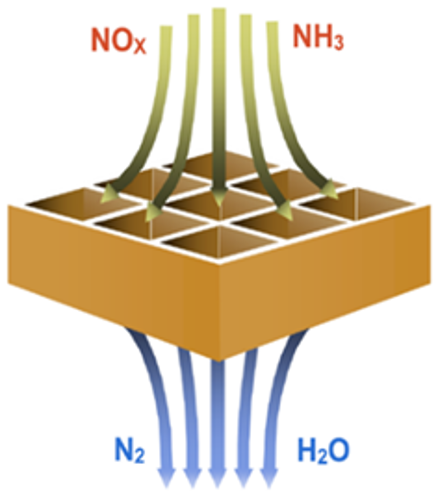WorkPackage 2 - Research at iCSI
New NOx abatement technologies for the marine market and state-of-the-art SCR catalysis
 iCSI is working to improve technologies for depleting nitrogen oxides emissions that have severe consequences to human health and the environment.
iCSI is working to improve technologies for depleting nitrogen oxides emissions that have severe consequences to human health and the environment.
NOx removal is becoming increasingly indispensable as the consequences to human health are summed up and regulations are tightened. In addition to automobiles, stationary power production, and chemical plants, attention is now also being directed towards the marine sector. A wide range of technologies for lean, i.e. high air/fuel, combustion mixtures are being developed. Most involve catalysis, but differ with respect to application area (stationary/mobile), conditions (P, T, air/fuel) and preferred reducing agent (NH3, hydrocarbons, H2, etc.). Despite heavy efforts, the current technologies are associated with high cost and added complexity, and some only perform well under ideal conditions while performance is unsatisfactory under realistic or dynamic operating conditions.
Yara and Haldor Topsøe AS both own proprietary deNOx technologies for different applications. N2O is a potent greenhouse gas and stratospheric ozone depleter that may form during production of nitric acid for fertilizer. Yara was the first to develop and install catalyst technology for N2O decomposition, a unique technology that may find widespread application under tighter global emission regulations.
Contact
Research Director, SINTEF Industry, Process Technology, Oslo
Email: jasmina.hafizovic.cavka@sintef.no
Industrial partner



